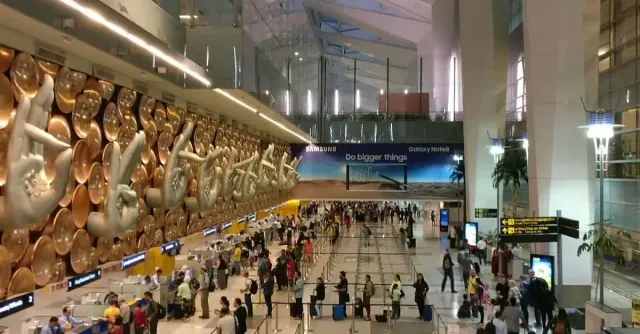- By Soumyaroop Mukherjee
- Thu, 13 Nov 2025 12:52 PM (IST)
- Source:JND
In an effort to reduce the impact of fog on flight operations, the Indira Gandhi International Airport, which is the busiest airport in the country, is set to begin the testing of an advanced fog forecasting technology that can predict dense fog hours in advance. This will give the aviation authorities the crucial time to plan and prevent any kind of disruptions like those that happened last year.
According to the Hindustan Times, the indigenous technology, identified as the Winter Fog Experiment (WiFEX) system, is a field campaign system designed to understand and improve fog prediction over northern India, especially in the Indo-Gangetic plains.
“The modelling can provide predictions for Delhi airport around 36 hours prior, giving sufficient time to prepare for flight operations. We will be taking a live trial of this system for the first time in December,” said Videh Kumar Jaipuriar, the chief executive officer (CEO) of Delhi International Airport (DIAL).
ALSO READ: Northern Lights Dazzle Skies Across US And Beyond In Rare Photo Spectacle | KEY Facts In Pics
Who Developed The WiFEX System?
The technology has been developed by a collaboration between the Indian Institute of Tropical Meteorology (IITM), Pune, the India Meteorological Department (IMD) and the Airports Authority of India (AAI). It was launched in 2015.
ALSO READ: Assam Police Arrest 15 For ‘Offensive’ Social Media Posts On Delhi Red Fort Blast
How Does The WiFEX System Work?
Under the new fog detection system, sensors have been installed across various locations on the perimeter of the airport. It then integrates field instruments, real-time meteorological data and high-resolution models to predict fog formation, persistence, and dissipation.
To give accurate data, the system uses a network of instruments, including lidars and ceilometers to measure fog height, radiometers and flux towers, to track humidity and surface radiation, wind profilers, weather stations, and balloon sensors. This will help the airport authorities track minute-by-minute changes in temperature, dew point and visibility.
“If it performs as expected, it will give us advance notice of dense fog conditions, allowing better coordination between airlines, ATC and ground units,” the DIAL CEO said.
ALSO READ: Delhi Blast: Faridabad Police Detain Man Who Parked Red EcoSport Car In Khandwali Area
Besides this, the Delhi airport also completed a critical update in making both sides of the airfield CAT-III, which will help airport operations even in low-visibility operations. Last winter, the easterly winds had exposed that only one runway of Delhi Airport is capable of supporting CAT-III landing, cutting the arrival capacity of flights from 42 to just 15 flights per hour. However, with the new upgrade, it is anticipated that roughly 30 flights can land per hour even in heavy fog.

